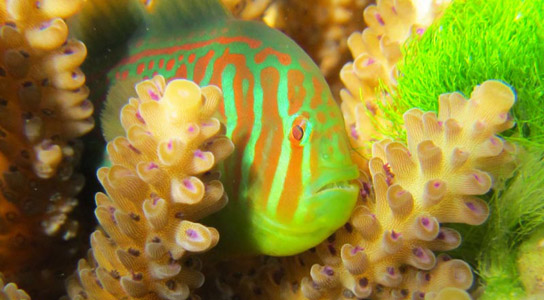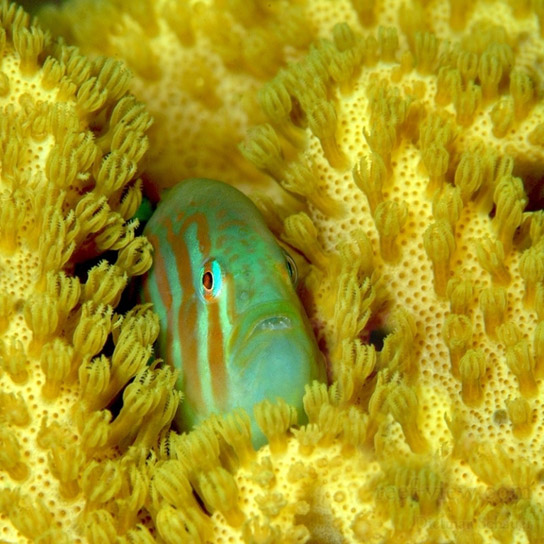Corals Emit Chemical Alarm to Summon Friendly Fish When Attacked
November 12, 2012

Gobies rescue the coral they live on from toxic seaweed after responding to a chemical cue. Image by Danielle Dixson
The scientists published their findings in the journal Science. They were able to summon gobies within minutes of the contact of seaweed. The researchers observed that corals with resident gobies saw a 30% decline in seaweed abundance after three days, whereas no change was seen in control corals.

Gobiodon histrio
To test whether the corals were actively alerting their residents to the threat, the researchers exposed gobies to water from a selection of locations. Water around the seaweed failed to generate any response. Water from the points where seaweed was in contact with coral caused the gobies in 20 separate coral colonies to move towards that source.
Damselfish exposed to chemical alarm simply abandoned their corals within 48 hours. It could also be possible that the fish are responding to a chemical that corals release to some kind of stress. Gobies often spend their entire lives in the same coral colony and many plants are known to release signals when they are under attack from herbivorous pests to attract predators of these same pests.
Finding the link remains difficult. “The sensory basis for ecological interactions remains enigmatic, especially in marine habitats,” says Richard Zimmer, who studies chemical signaling between organisms at the University of California, Los Angeles. This research helps bridge the gap between cause and the effect on the ecosystem.
No comments:
Post a Comment